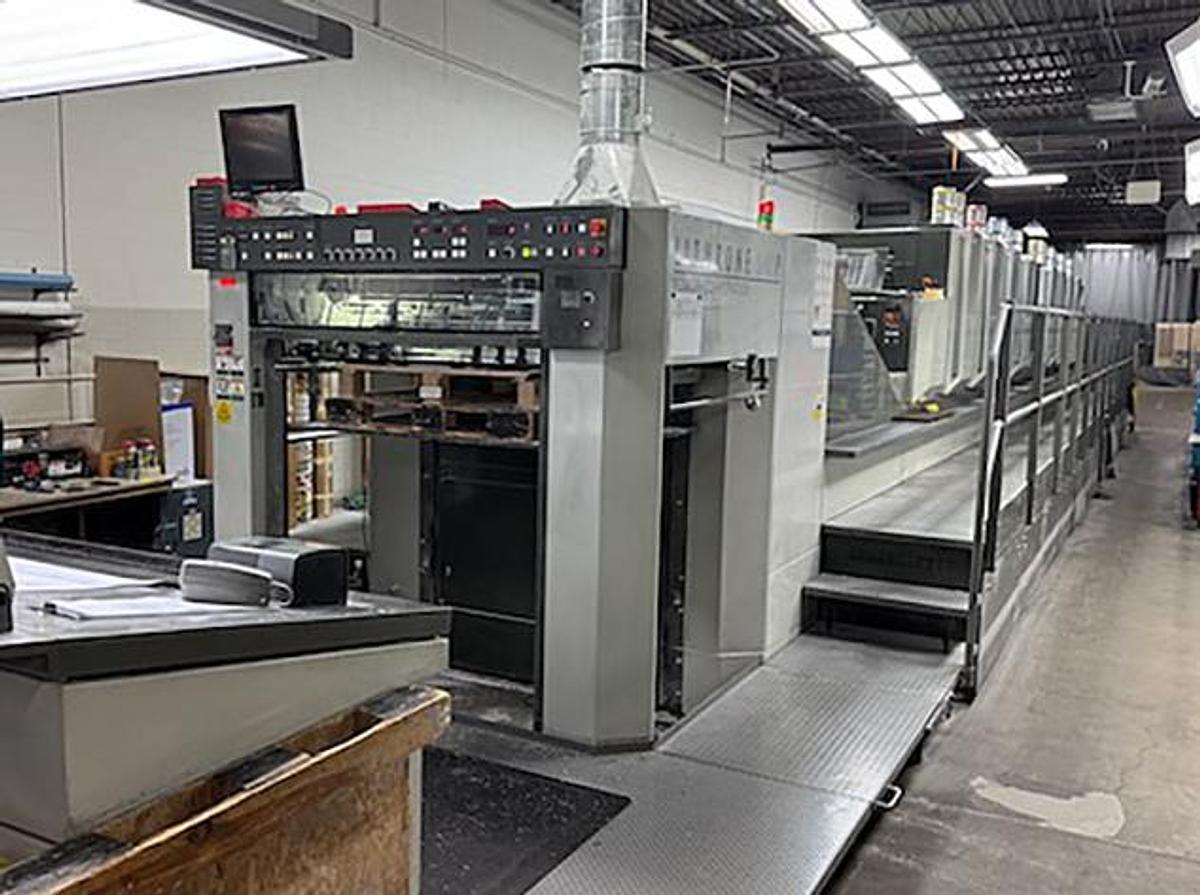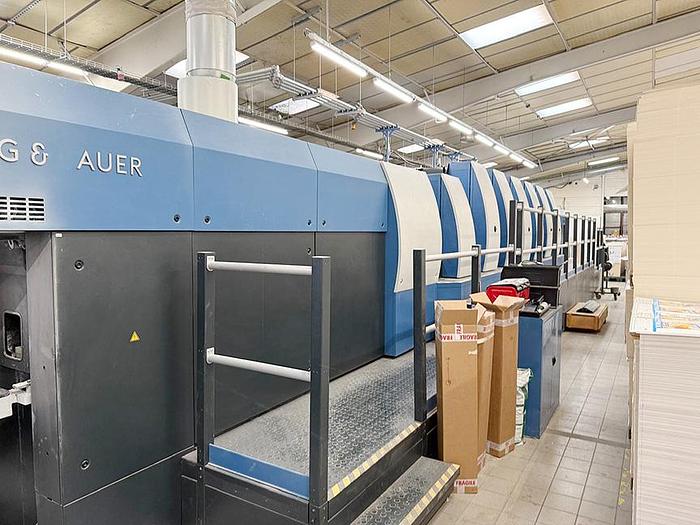Advanced Filters
Category
Manufacturer
Year
APT isn’t just a reseller. We’ll consult with your team to make sure you find the perfect machine. We use our in-house accredited appraisal team, making sure you get the best value from your used equipment and machinery. We transport machines all across the globe, from South Plainfield, NJ to Hyderabad, India. And once at your facility, we install our machines to run perfectly, train your team to use your new-to-you machine efficiently, and offer service and maintenance to keep your production floor running.
Featured

2007 Komori LS-840P+ANILOX COATER
- Manufacturer
- Komori
- Model
- LS-840P+ANILOX COATER
- Stock Number
- 00036
- Year
- 2007
Featured

2005 Heidelberg CD102-8+LX hybrid UV
- Manufacturer
- Heidelberg
- Model
- CD102-8+LX hybrid UV
- Stock Number
- 00035
- Year
- 2005
Featured

2020 KBA 106X-RDC-8-SW5+L FAPCX ALV2
- Manufacturer
- KBA
- Model
- 106X-RDC-8-SW5+L FAPCX ALV2
- Stock Number
- 00028
- Year
- 2020
Featured

2020 KBA 106-6+L CX FAPC ALV2 20K
- Manufacturer
- KBA
- Model
- 106-6+L CX FAPC ALV2 20K
- Stock Number
- 00017
- Year
- 2020
Featured

2018 Heidelberg XL106-7+LX3 Hybrid UV
- Manufacturer
- Heidelberg
- Model
- XL106-7+LX3 Hybrid UV
- Stock Number
- 00016
- Year
- 2018
Featured

2016 Bobst Expert Cut 106-PER 2.0
- Manufacturer
- Bobst
- Model
- Expert Cut 106-PER 2.0
- Stock Number
- 00015
- Year
- 2016
Featured

2017 Heidelberg Stahl KH82/6-KTL-PFX + Palamides Alpha 500 HD
- Manufacturer
- Heidelberg Stahl
- Model
- KH82/6-KTL-PFX + Palamides Alpha 500 HD
- Stock Number
- 00013
- Year
- 2017
Featured

PMC PMC Model J Die Cutting Machine S/N J-850
- Manufacturer
- PMC
- Model
- PMC Model J Die Cutting Machine S/N J-850
- Stock Number
- 00011
- Year
Featured

PMC PMC Model 200 Series 9 x 12 Die Cutting Machine S/N 1356
- Manufacturer
- PMC
- Model
- PMC Model 200 Series 9 x 12 Die Cutting Machine S/N 1356
- Stock Number
- 00010
- Year
Featured

2012 Bobst MASTERFOLD 75 folder gluer + BOBST CARTONPACK GT75
- Manufacturer
- Bobst
- Model
- MASTERFOLD 75 folder gluer + BOBST CARTONPACK GT75
- Stock Number
- Year
- 2012

2002 Sanden 1300XP 10-Color Narrow Web Offset Press
- Manufacturer
- Sanden
- Model
- 1300XP 10-Color Narrow Web Offset Press
- Stock Number
- 00026
- Year
- 2002






















